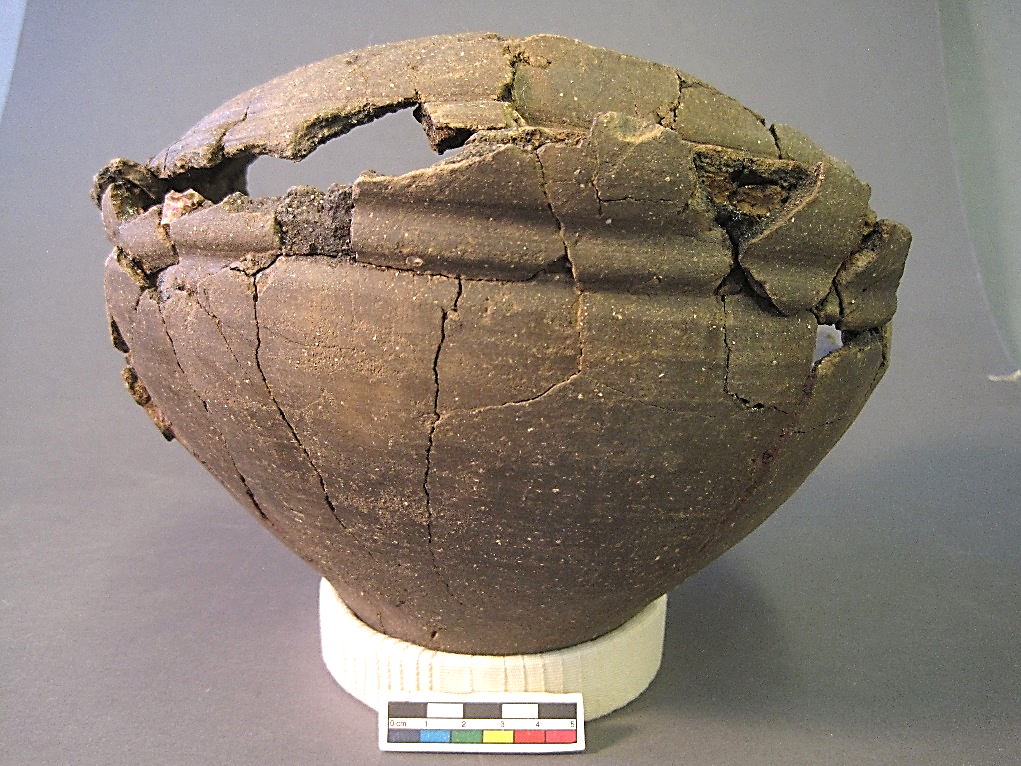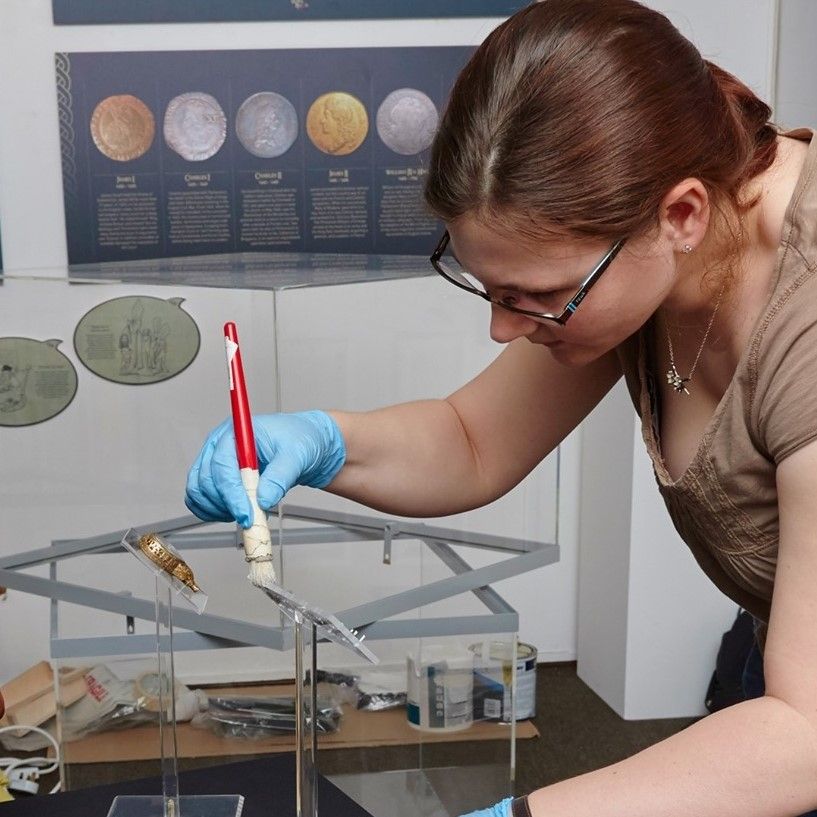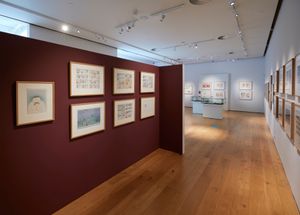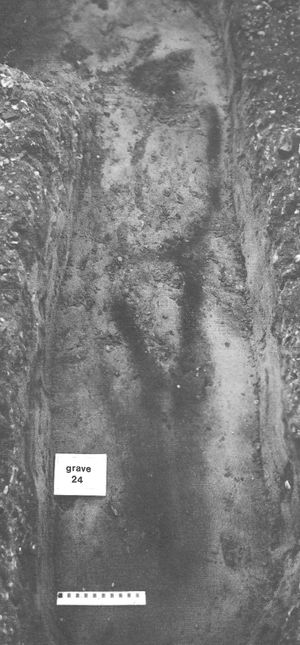Our Festival of Archaeology series on Culture on Call comes to a close today. Join Conservator Claire Woodhead as she discusses how the Late Iron Age Oakley vessel is getting display ready.

In August 2019, Hampshire Cultural Trust acquired the ‘Oakley hoard’, an assemblage consisting of a copper alloy and wood tankard, another copper alloy vessel, some iron implements and a ceramic vessel. The items were discovered in association with a Late Iron Age burial at Oakley, near Basingstoke, in January 2017.
Conservation of the Oakley tankard has already been completed (an account of the work can be read in Hampshire Field Club and Archaeological Society Newsletter, No. 73, Spring 2020). A short series of posts for last year’s Festival of Archaeology charted the vessel’s journey through micro-excavation, cleaning and reconstruction. In this final instalment, we will see the pot through to completion.
The Oakley vessel – Part 4: Completion

At the end of the previous instalment, the Oakley vessel had been micro-excavated, revealing an interesting iron staple lying within the fill part way down. It had been cleaned and consolidated, and then bonded with a reversible adhesive. The pot was now nearly finished, but there were just a couple of stages left before it would be potentially ready for display.

The crushed shape of the pot was preserved throughout the conservation process - a deliberate decision, made early on. Firstly, the crushed shape tells the story of the forces acting on this soft low fired pottery, residing underground for thousands of years. But also, from a practical point of view, the pot fragments had actually deformed to the point that they would no longer have fitted together. During cleaning, some of the soil holding these deformed fragments together had been successfully consolidated in situ, but much had been lost. It was therefore decided to pack the largest, most structurally vulnerable open cracks with a reversible, sympathetically coloured fill, closely matching the colour of the original soil while being of a different enough tone and texture to be told apart.

The pot had no base, so in order to give it the support required, a piece of cardboard tubing was selected to form the base of a ‘doughnut’ mount. Since this cardboard was not of conservation grade, inert aluminium foil was wrapped around it to provide a barrier layer. The whole mount was then wrapped with unbleached cotton tying tape to form a simple ring-shaped base for the pot to rest in, while in storage or on display.



We are now awaiting an opportunity to display this pot locally, hopefully along with some of the other Oakley finds, as they are completed. Watch this space!
If you have enjoyed Culture on Call and you are able to make a donation, please click the link below. Any support you can give will help us keep communities connected to culture in these difficult times.





